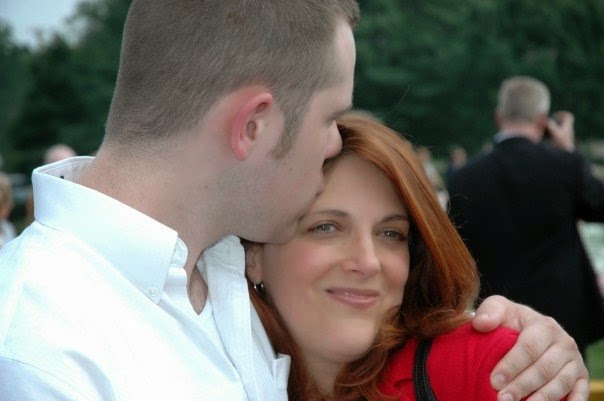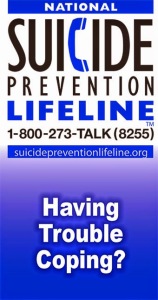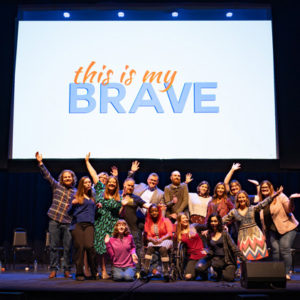Guest Post: What I Learned From My Son’s Suicide Attempt
Today we’re sharing a post {with permission}, from the blog of Diana M. Rodriguez, a freelance writer in Alexandria, VA. It’s a powerful look back at her then-25-yr-old son’s attempt to take his own life and what they both want people to know about depression and attempted suicide: you are not alone and through awareness we can help save lives.
How can this be happening? What I learned from my son’s suicide attempt
It was November, 12th, 2010, when I got the phone call every parent prays they’ll never get.
It was my 25 year old son, and he was distressed and agitated. He was talking about feeling completely hopeless – in emotional and spiritual pain, and just wanting it to be over. I tried to console him, but he was too deep in his pain to hear my words.
“Where are you?” I asked. He said he was in a park, but would not give me the exact location. He had taken a lot of pills, and he just wanted to go to sleep, forever.
In that moment, I realized I had to keep my head and try to figure out what to do. I frantically started calling his friends and asking if they knew where he was. I called his dad. In the midst of this controlled panic, I was hoping this was all a misunderstanding, and that it wasn’t as serious as it sounded. But I knew I couldn’t afford to be wrong.
Thankfully, the end of this story was not the tragic death of a young person. With the help of many people, we were able to locate my son, and get him to a hospital in time to pump his stomach, and save his life. It was a wake-up call for our family, and we realized that my son’s depression was a serious, and life-threatening problem.
In the days that followed the attempt, we all realized we had not understood how desperate and hopeless he had become. It wasn’t that we weren’t listening to him; we just hadn’t understood the signs, and the depth of his despair.
I called my son to ask his permission before writing this blog post and share this important story to help others understand. I told him it was completely up to him, and that if he didn’t feel comfortable, I would write it in a way that did not identify him. Without hesitation, he encouraged me to write it, and hoped it would help others who have fallen into despair about their lives. Then he asked me if I remembered the Facebook message I had posted the day after he woke up in the hospital. That message said: “I was awakened to a wonderful and blessed sound this morning – the sound of my son’s voice.”
By telling this story, a very personal story, my son hopes that this project can help another family, or person who is struggling. He wants others to know that he isn’t ashamed of what happened and isn’t keeping it a secret. At the time of his attempt, he was in an emotional state that prevented him from having hope. He was in deep pain and confusion. Through sharing this story, without shame or anxiety about telling this important story, he said he hoped someone else could benefit from knowing what happened to him, and that they might realize that suicide isn’t the solution.
The stigma of depression and attempted suicide is what leads many people to finally end their lives. It is important to talk about how suicide happens, and how to find ways to help prevent people from taking their lives.
Have you ever heard someone close to you say any of the following things?
“I just want the pain to stop.”
“No one can help me through this.”
“I’ve lost control of my life.”
“It’s too late to get help.”
“Life has nothing for me anymore.”
“I don’t know how to fix this.”
There are situations and events that can bring a person to the point of despair. We’ve all had experiences that have caused us to question the direction and value of our lives. Each event will affect each person in a different way, and if there are multiple stressors happening all at once, it can become dangerously overwhelming.
As an example, a person going through a divorce or separation from a spouse may feel isolated, defeated, and hopeless. If that person is not sleeping well, or becomes physically impaired in addition to this emotional strain, they are further at risk for suicidal ideation. If additional problems with finances, children, or employment come into the mix, there can be a breaking point for the individual who is struggling already.
You may ask, “But what can I do to help? It isn’t any of my business.” Of course it is. Anytime we see someone in our community, family, workplace, or social group struggling, we should do whatever we can to reach out to them and let them know that there is always a way out of a bad situation. It isn’t easy. There isn’t always an immediate, quick fix in these situations. Awareness means being able to recognize when a person is at the breaking point, and working with them to find help.
There are resources available. Education and awareness is key to understanding the reasons for suicide attempts. I hope you won’t need to use these resources, but as I found out, it can happen to anyone, at any time. It is my sincere hope that through sharing my story, and helping others become more aware, someone else may be able to save a life.
 Diana M. Rodriguez is a freelance writer, blogger, philosopher, social media fiend, commentator, mother, wife, daughter, sister, friend. She founded a freelance company called Write Type Communications. Follow Diana via her blog, I Say What I Mean, but I Don’t Say it Meanly, on Twitter, and on Facebook.
Diana M. Rodriguez is a freelance writer, blogger, philosopher, social media fiend, commentator, mother, wife, daughter, sister, friend. She founded a freelance company called Write Type Communications. Follow Diana via her blog, I Say What I Mean, but I Don’t Say it Meanly, on Twitter, and on Facebook.



